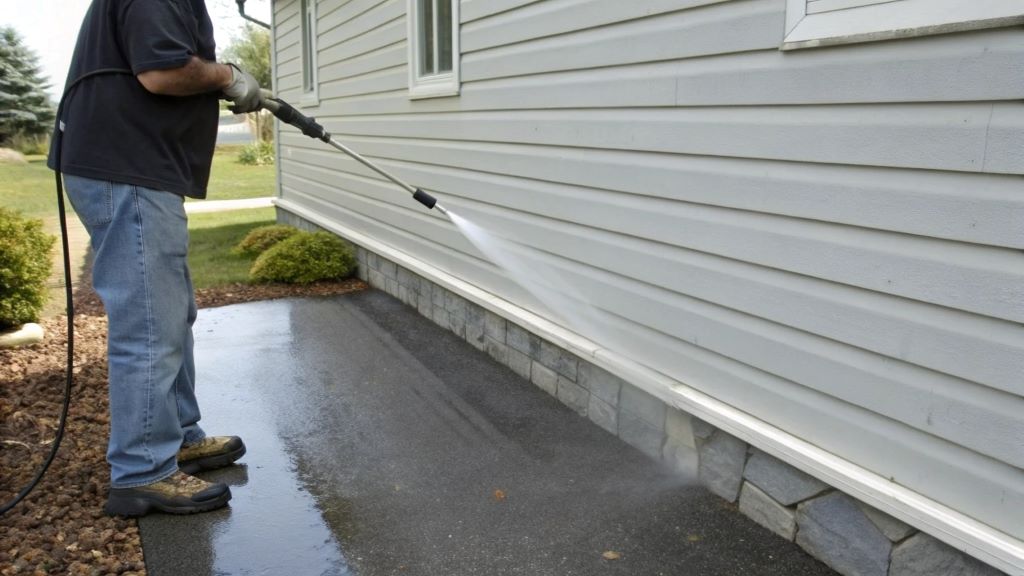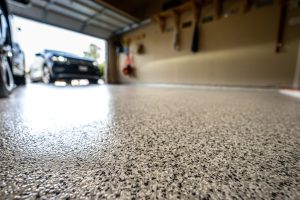Ultimate Guide to Gas Power Washers: Choosing the Right One for Aluminum Siding and Driveways
Gas power washers have become essential tools for homeowners who want to maintain their property’s appearance and value. These powerful machines can transform dirty aluminum siding and stained driveways into surfaces that look brand new. Whether you’re tackling stubborn oil stains on concrete or removing years of grime from your home’s exterior, the right gas power washer makes all the difference. Additionally, resources like Sherwood Blog provide valuable insights and reviews to help you make informed decisions about your cleaning equipment needs.
When it comes to outdoor cleaning projects, gas power washers offer superior performance compared to their electric counterparts. However, choosing the wrong unit can lead to damaged surfaces, wasted time, and frustrated homeowners. Therefore, understanding the key features and specifications becomes crucial for successful cleaning results.
Finding the best gas power washer for aluminum siding and driveway cleaning requires careful consideration of several factors. These include pressure output, water flow rate, engine reliability, and portability features. Furthermore, different cleaning tasks demand specific pressure ranges to achieve optimal results without causing damage.
Understanding Gas Power Washer Basics
Gas power washers operate using internal combustion engines that drive high-pressure water pumps. These engines typically run on regular unleaded gasoline and provide consistent power output regardless of electrical availability. Moreover, they deliver higher pressure and flow rates than electric models, making them ideal for heavy-duty cleaning tasks.
The primary components include the engine, pump, pressure hose, spray gun, and various nozzle attachments. Additionally, most units feature wheels for mobility and onboard storage for accessories. Understanding these components helps users maximize their cleaning efficiency and equipment longevity.
Pressure ratings typically range from 2,000 to 4,000 PSI (pounds per square inch), while flow rates vary between 2.0 to 4.0 GPM (gallons per minute). However, higher numbers don’t always mean better performance for every application. Therefore, matching the specifications to your specific cleaning needs becomes essential.
Key Features to Consider
Pressure Output and Flow Rate
The pressure output determines the cleaning force, while flow rate affects how quickly you can complete tasks. For aluminum siding, pressures between 1,500 to 2,500 PSI work effectively without causing damage. Conversely, driveways can handle higher pressures ranging from 2,500 to 3,500 PSI for stubborn stains.
Flow rate becomes equally important because it determines how much surface area you can clean efficiently. Higher flow rates reduce cleaning time significantly. However, they also consume more water and may require larger water supply sources.
Engine Quality and Reliability
The engine serves as the heart of any gas power washer. Reliable engines from manufacturers like Honda, Briggs & Stratton, and Kohler typically offer longer service lives and easier maintenance. Additionally, engines with automatic low-oil shutoff protect against costly damage from insufficient lubrication.
Consider engines with electric start features for convenience, especially if you plan frequent use. Furthermore, engines with larger displacement generally provide more consistent power under load conditions.
Pump Construction and Durability
Pumps come in two main types: axial cam pumps and triplex plunger pumps. Axial cam pumps cost less initially but offer shorter lifespans and lower pressure capabilities. Conversely, triplex pumps provide superior durability and maintain consistent pressure over extended periods.
Additionally, pumps with ceramic or stainless steel components resist corrosion better than aluminum alternatives. Therefore, investing in quality pump construction pays dividends through reduced maintenance and longer equipment life.
Aluminum Siding Cleaning Considerations
Aluminum siding requires gentle yet effective cleaning techniques to prevent damage. The material’s relatively soft surface can dent or scratch under excessive pressure. However, proper technique and equipment selection ensure excellent results without harm.
Start with lower pressure settings around 1,500 PSI and gradually increase if necessary. Additionally, maintain a distance of 12 to 18 inches from the surface during cleaning. Using a 25-degree or 40-degree nozzle provides adequate coverage while minimizing damage risk.
Pre-treating heavily soiled areas with appropriate detergents improves cleaning effectiveness. Furthermore, working from bottom to top prevents streaking and ensures even coverage. Always rinse thoroughly after detergent application to prevent residue buildup.
Driveway Cleaning Strategies
Concrete driveways can withstand higher pressure settings than aluminum siding. Therefore, you can safely use pressures up to 3,500 PSI for stubborn oil stains and embedded dirt. However, start with moderate pressure and increase gradually as needed.
Surface preparation involves removing loose debris and applying appropriate cleaning solutions for specific stains. Oil stains respond well to degreasing detergents, while organic stains may require specialized cleaners. Additionally, allowing cleaning solutions to dwell for several minutes enhances their effectiveness.
Use overlapping spray patterns to ensure complete coverage and avoid streaking. Moreover, maintain consistent distance and movement speed for uniform results. Stubborn stains may require multiple passes with different nozzle configurations.

Safety Precautions and Best Practices
Gas power washer operation involves several safety considerations. Always wear protective equipment including safety glasses, closed-toe shoes, and appropriate clothing. Additionally, never direct the spray toward people, pets, or delicate surfaces.
Ensure adequate ventilation when operating gas-powered equipment to prevent carbon monoxide exposure. Furthermore, check all connections and hoses before each use to prevent dangerous failures under pressure.
Store gasoline in approved containers and never refuel while the engine is hot or running. Moreover, perform regular maintenance including oil changes, air filter cleaning, and spark plug inspection to ensure safe operation.
Maintenance and Storage Tips
Regular maintenance extends equipment life and ensures reliable performance. Change engine oil according to manufacturer specifications, typically after the first five hours and then every 50 hours of operation. Additionally, clean or replace air filters regularly to maintain engine performance.
Winterization becomes crucial in freezing climates. Run antifreeze through the pump system or completely drain all water to prevent freeze damage. Furthermore, treat fuel with stabilizer or drain the tank completely for long-term storage.
Store equipment in dry, protected areas away from children and pets. Moreover, inspect hoses and fittings regularly for wear and replace damaged components immediately to prevent failures during operation.
Budget Considerations and Value
Gas power washers range from budget-friendly models under $300 to professional units exceeding $1,000. However, price alone doesn’t determine value. Consider total cost of ownership including maintenance, fuel consumption, and replacement parts availability.
Entry-level units work adequately for occasional use but may lack durability for frequent applications. Conversely, commercial-grade equipment offers superior longevity but may exceed needs for typical homeowners. Therefore, match your purchase to expected usage patterns and performance requirements.
Additionally, factor in warranty coverage and local service availability when making decisions. Equipment with longer warranties and accessible service networks typically provide better long-term value despite higher initial costs.
Environmental Impact and Efficiency
Modern gas power washers incorporate features to reduce environmental impact. Engines meeting EPA emissions standards burn cleaner and produce fewer pollutants. Additionally, efficient pump designs reduce water consumption while maintaining cleaning effectiveness.
Consider models with adjustable pressure settings to minimize water and fuel waste. Furthermore, using biodegradable detergents reduces environmental impact while maintaining cleaning performance.
Proper operation techniques also improve efficiency. Plan cleaning routes to minimize setup time and fuel consumption. Moreover, group similar cleaning tasks together to maximize equipment utilization and reduce overall environmental impact.
Conclusion
Selecting the right gas power washer for aluminum siding and driveway cleaning requires balancing power, versatility, and safety considerations. Understanding pressure requirements for different surfaces prevents damage while ensuring effective results. Additionally, focusing on engine reliability and pump quality provides long-term value and performance.
Remember that proper technique matters as much as equipment selection. Start with conservative settings and adjust gradually based on results. Furthermore, regular maintenance and proper storage extend equipment life significantly. By following these guidelines, homeowners can enjoy years of effective cleaning performance while protecting their investment in both equipment and property surfaces.
Frequently Asked Questions
What PSI is safe for cleaning aluminum siding?
Use between 1,500 to 2,500 PSI for aluminum siding to prevent damage. Start with lower pressure and gradually increase if needed. Additionally, maintain proper distance and use wide-angle nozzles for best results.
Can I use the same gas power washer for both siding and driveways?
Yes, most gas power washers handle both applications effectively. However, use different pressure settings and nozzles for each surface. Driveways can handle higher pressure while siding requires gentler treatment.
How often should I change the oil in my gas power washer?
Change oil after the first five hours of operation, then every 50 hours thereafter. Additionally, check oil level before each use and change more frequently under heavy use conditions or dusty environments.
Do I need special detergent for pressure washing?
While not always necessary, appropriate detergents improve cleaning effectiveness significantly. Use detergents specifically designed for pressure washers and follow manufacturer dilution recommendations. Moreover, choose biodegradable options when possible.
What size gas power washer do I need for home use?
For typical residential applications, units producing 2,500 to 3,200 PSI with 2.5 to 3.0 GPM flow rates work well. However, consider your specific cleaning needs and frequency of use when making the final decision.
Read More:
How to Clean a Deck Without a Power Washer
Top Daily Cleaning Habits to Adopt: A Path to a Consistently Clean and Calm Home














Post Comment